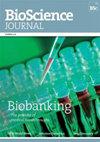茚地夫兰和氯马唑酮对甘蔗作物问题杂草的防治效果
IF 0.6
4区 农林科学
Q3 AGRICULTURE, MULTIDISCIPLINARY
引用次数: 0
摘要
人们认为,不管土壤的类型或质地如何,与氯马酮相比,indaziflam的杂草控制时间更长。因此,本研究的目的是评估在两种不同质地土壤中,使用除草剂茚地夫兰和氯马唑酮对5种禾科问题杂草对甘蔗的苗期控制。进行了两项实验,一项是在砂壤土质地的土壤中进行的,另一项是在粘土中进行的。两项实验均采用随机分组设计,共4次重复。施用除草剂茚地夫兰(75、100 g / ha-1)、氯马酮(1080 g / ha-1)和不施用除草剂的对照。在小样地中,处理为横地黄、大黄、胭脂草、卧斑尿藻和车前草尿藻。两种除草剂在粘土土壤中均有较好的效果,但施用吲哚吡喃(100 g / ha-1)后240 d (DAA)仍能保持90%以上的除草效果,而氯马唑酮的除草效果仅为90 DAA。除草剂氯马唑酮对沙壤土杂草的控制效果不理想。除草剂吲唑吡喃对沙壤土中的卧卧木没有抑制作用。无论土壤质地如何,横木和胭脂草对除草剂茚唑啉最敏感。本文章由计算机程序翻译,如有差异,请以英文原文为准。
Efficacy of the herbicides indaziflam and clomazone on problematic weeds of family poaceae to sugarcane crop
It is believed that indaziflam gives a longer period of weed control compared to clomazone, irrespective of the type or texture of the soil. Thus, the aim of this study was to evaluate pre-emergent control in five problematic weed species of family Poaceae to sugarcane, using the herbicides indaziflam and clomazone in two soils of different textures. Two experiments were carried out, one in a soil of a sandy-loam texture and the other in a clayey soil. For both experiments, a randomised block design of split plots was chosen, with four replications. The treatments consisted of the herbicides indaziflam (75 and 100 g ai ha-1), clomazone (1080 g ai ha-1) and a control with no herbicide. In the subplots, the treatments were Digitaria horizontalis, Panicum maximum, Rottboellia cochinchinensis, Urochloa decumbens and Urochloa plantaginea. Both herbicides were more effective in the clayey soil, but with indaziflam (100 g ai ha-1), more than 90% control of the weeds remained after 240 days after application (DAA), whereas for clomazone, control remained only up to 90 DAA. The herbicide clomazone did not satisfactorily control the weeds in the sandy-loam soil. The herbicide indaziflam did not control U. decumbens in the sandy-loam soil. D. horizontalis and R. cochinchinensis were the most sensitive species to the herbicide indaziflam, irrespective of soil texture.
求助全文
通过发布文献求助,成功后即可免费获取论文全文。
去求助
来源期刊

Bioscience Journal
Agricultural and Biological Sciences-General Agricultural and Biological Sciences
CiteScore
1.00
自引率
0.00%
发文量
90
审稿时长
48 weeks
期刊介绍:
The Bioscience Journal is an interdisciplinary electronic journal that publishes scientific articles in the areas of Agricultural Sciences, Biological Sciences and Health Sciences. Its mission is to disseminate new knowledge while contributing to the development of science in the country and in the world. The journal is published in a continuous flow, in English. The opinions and concepts expressed in the published articles are the sole responsibility of their authors.
 求助内容:
求助内容: 应助结果提醒方式:
应助结果提醒方式:


